Scabies is a contagious parasitic skin disease caused by the scabies mite Sarcoptes scabiei, accompanied by itching, intensifying in the evening and at night, and papuliform and vesicular rashes.
Currently, scabies remains one of the most common parasitic dermatoses in our country.
The increase in the number of scabies patients usually accompanies wars, natural disasters, social upheavals, which is caused by population migration, economic recession and deterioration of social and living conditions.
As stated above, the causative agent of scabies is the scabies mite, Sarcoptes scabiei. This species belongs to the family Sarcoptidae, group Acaridiae, suborder Sarcoptiphormes, family Acariphormes. Representatives of the genus Sarcoptes are presently known as parasites of more than 40 species of animal hosts belonging to 17 families of 7 mammal genera.
The morphological appearance of scabies mites of the family Sarcoptidae is extremely peculiar and is caused by deep adaptations to intradermal parasitism. The structure of the scabies itch, like that of most mites, is characterized by a strict constancy of the microstructures of the external skeleton, which is related to their microscopic size.
The female scabies mite externally resembles a turtle. Its size is 0.25-0.35 mm. Its adaptations to intradermal parasitism are represented by multiple bristles, triangular cuticle outgrowths on dorsal surface, spines on all tarsi, which serve as pawing stops, chelicerae of gnawing type, long elastic bristles on tarsi of hind pairs of legs to maintain direction of stroke only forward. Ectoparasitism adaptations are sticky pneumatic suction cups on forelegs, waxy bristles on body and limbs, which create an extensive mechanoreceptor sphere around the mite and allow orientation by touch without eyes. The rate of movement of the female in the course is 0.5-2.5 mm/day and on the skin surface 2-3 cm/min. Sexual dimorphism is characteristic of scabies mites. The main function of males is fertilization. They are much smaller in size, 0.15-0.2 mm, and have dense bristles on their bodies for protection from mechanical action and suckers also on the IV pair of legs for attaching to the female during mating. The ratio of females to males in scabies mites is 2:1.
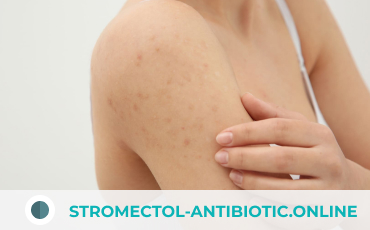
The life cycle of the scabies mite is clearly divided into two parts: short-term cutaneous and long-term intradermal. The intradermal is represented by two topically separated periods: reproductive and metamorphic. The reproductive period is carried out by the female in her gnawed scabies passage, where she lays eggs. Hatching larvae emerge from the ducts to the surface of the skin through holes made by the female over the site of each clutch, settle on it and penetrate into the hair follicles and under the scales of the epidermis. Here their metamorphosis (molting) takes place: new individuals (females and males) are formed through the proto- and teleonymph stages. The females and males of the new generation come to the skin surface, where their mating takes place. The daughter females migrate to the hands, wrists, and feet, infiltrate the skin, and immediately begin making passages and laying eggs. In rare cases introduction of females is possible in other skin areas (buttocks, axillary areas, abdomen, etc.) due to mechanical clamping. Clinically, this corresponds to scabiosis lymphoplasia of the skin. Only females and larvae are invasive stages and participate in the infection. At room temperature and at least 60% relative humidity, females retain motility for 1-6 days. Even at 100% humidity, females survive up to 3 days on average, larvae up to 2 days.
Scabies mites are characterized by a strict diurnal rhythm of activity. In the daytime, the female is in a state of rest. In the evening and in the first half of the night, she gnaws one or two egg-laying knees at an angle to the main direction of movement, in each of which she lays an egg. Before she lays an egg, she deepens the bottom of the passage and makes an exit hole in the roof for the larvae. During the second half of the night the female gnaws her way along the passage in a straight line, feeding intensively; during the day she stops and freezes. The daily program is carried out by all females synchronously. As a result, the scabies course on the skin of a patient has a twisted shape and consists of sections of the course, called the diurnal element of the course. The posterior part of the course is gradually exfoliated, and in the clinical examination of the patient, it simultaneously consists of 4-7 diurnal elements and has a constant length of 5-7 mm. During its life, the female passes 3-6 cm in the epidermis; the revealed diurnal rhythm of activity is of great practical importance. It explains the increased itching in the evening, the predominance of the direct route of infection by contact in bed in the evening and at night, and the effectiveness of prescribing anti-rabbit drugs at night.
Clinical picture
The clinical picture of scabies is determined by the characteristics of the pathogen and the host’s response to its introduction.
The incubation period in scabies varies in length and depends on whether an adult female or a larva has entered the skin. In the first case, it is extremely short, while in the second it is 2 weeks. Itching, as the main symptom of scabies, appears within a time frame that ranges from 14 days to 6 weeks in primary infection and may be extremely short, being limited to a few days in reinfection. It has also been shown that reinfection, at the same time, may be more difficult in already sensitized individuals, and the number of detected scabies mites in these patients is often minimal.
A typical form of scabies
Characterized by the presence of skin itching, which is most pronounced in the evening and during sleep. However, the itching may also be constant. It may be localized in certain areas of the skin or spread throughout the body except on the face and scalp. An extremely important sign is the presence of itching in the family or community.
Examination reveals specific rashes. The main clinical symptoms of scabies are scabies-like passages, polymorphic rashes outside the passages, characteristic rash locations, and symptoms named after the authors of Ardi (presence of pustules and purulent crusts on and around the elbows), Gorchakov (presence of bloody crusts there), Michaelis (presence of bloody crusts and impetiginous rash in interfemoral fold with passage to sacrum), Cesari (detection of scabies-like passages as slight elevation on palpation).
Characteristic places of localization of rashes are mainly the flexural surface of joints (wrist and elbow), as well as the anterolateral surface of the abdomen, loins, buttocks, genital area, while they are absent on the upper half of the back. Scabies passages and rashes are well pronounced in the interfinger and subfinger folds, on the perineal circles of women’s breasts, and in the navel area. Rashes are represented by paired papules and vesicles, itchy passages, eczematous pseudovesicles (pearl vesicles) on the skin of the lateral surfaces of fingers and palms; scabiosal ulcers, with crusts on the surface; and scabiosal nodules.
Atypical forms of scabies
Frequently encountered in recent years, it seems to us appropriate to classify and present as follows:
- scabies without skin lesions;
- urticarial scabies;
- scabies on the background of corticosteroid therapy;
- nodular (with postscabiosis nodules) scabies;
- eczematized scabies;
- scabies complicated by pyoderma;
- norwegian scabies;
- Infant and childhood scabies.
The first two forms are caused mainly by allergic reactions.
Scabies without skin lesions may represent the initial forms of the disease in people who observe body hygiene norms, but more often manifests as an allergic reaction to mite antigens during or after treatment of the disease. This form of the disease is more often detected by active examination of persons who have been in contact with a scabies patient.
Urticarial scabies are represented by small blisters caused by sensitization to both mites and their products. They occur more frequently on the front surface of the trunk, thighs, buttocks and forearms.
Scabies on topical corticosteroid therapy, also called latent scabies, as a result of suppression of immune reactions of the skin leads to loss of specific symptoms of scabies. The disease becomes papulosquamous, papulovesicular, and sometimes even hyperkeratotic.
Nodular scabies (scabiosis lymphoplasia) is characterized by the appearance of itchy red, pink or brown nodules. Scabies can be found on the surface of the new nodules. Typical localization is the penis, scrotum, iliac and interfemoral folds, and the areolae. Nodules are usually not numerous. Sometimes they are the only diagnostic sign of scabies [2, 4].
Eczematous scabies usually occurs in people with an allergic predisposition. Foci of lichenification may appear on the scratching sites. However, eczematous lesions usually come to the fore and the diagnosis of scabies cannot always be suspected. The rashes appear on the hands, armpits, shins and hands. In advanced cases, the rash can become disseminated, up to the development of erythroderma.
In persons with a reduced resistance of the body, eczematous lesions at the scratch sites may be accompanied by secondary bacterial infection in the form of impetigo or ecthymes, and staphylococcal folliculitis, furuncles and abscesses may occur.
Norwegian scabies (crustose, cortical) in its initial stages presents as normal scabies or masquerades as atopic dermatitis, psoriasis, seborrheic dermatitis. Hornification, formation of scales or thick crusts are characteristic. With severe immunodeficiency, the process may be generalized, with neurological diseases – manifested by a limited area of sensory impairment.
Infant and child scabies is characterized by rashes resembling urticaria or infantile scabies in the form of a large number of scratched and crusted blisters with predominant localization in the perineum, scrotum and iliopsoas folds. Characteristic scabies can be found on the soles.
Diagnosis
The diagnosis of scabies, in addition to clinical findings, is based on microscopic confirmation of the diagnosis. However, this procedure requires considerable skill and an experienced microbiologist and is unfeasible in some clinical forms. The minimal clinical manifestations of scabies also make it difficult to obtain sufficient biological material for examination. The technique has advantages in specialized facilities. There are several techniques for laboratory diagnosis of scabies: extraction of the mite with a needle, thin section method, scrapings, and alkaline skin dissection.
Treatment
Various preparations of sulfur, benzyl benzoate, Peruvian balsam, etc., were previously offered for the treatment of scabies. In recent years, new agents such as Spregal, crotamiton, lindane, malathion, permethrin, Prioderm, Tetmosol, thiobendazole, prescribed as ointments, creams, solutions, shampoos, emulsions and aerosols, have become available. The main requirements for anti-itch products are fast and reliable therapeutic effect, absence of skin irritation and contraindications to prescription, ease of preparation and application, stability during long-term storage, accessibility for mass use, hygiene and low cost [8, 9]. In addition, different forms of scabies, such as postscabiosis, eczematous or urtic, require the addition of pathogenetic therapy.
General principles: rubbing anti-scabies drugs into the skin, especially carefully at the mite’s favorite localization sites. After each forced washing of hands it is necessary to treat them again with an anti-hairmick agent. In case of complications (primarily pustular skin lesions), lubrication rather than rubbing should be applied. Before treatment it is advisable to take a hot shower or bath, using a washcloth and soap to mechanically remove mites from the skin surface, as well as to loosen the surface layer of the epidermis, which facilitates penetration of anti-scabies preparations. Water procedures are contraindicated in the presence of secondary pyoderma phenomena. Regardless of the method of treatment the entire skin is treated with antiscabies preparation. Avoid contact of the drug with eyes and mucous membranes. The dosage of the acaricide should not be too high, and other skin medications should not be used at the same time. The patient should be given clear and concise advice.
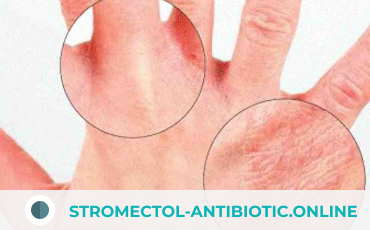
Means used to treat scabies
1. Preparations containing sulfur
Have long been used to treat scabies. Examples of such remedies are: 10-33% sulfur ointment, 10% sulfur vaseline, Demjanovich’s method, Wilkinson’s ointment, 5-10% polysulfide liniment, Sulfodecortem, Helmeric ointment, Milian paste.
Currently, the use of such preparations is limited because the therapeutic effect of some of them is questioned. In addition, they have a number of undesirable properties: drugs have an unpleasant odor, stain clothes and underwear, have an adverse effect on the skin (dermatitis, eczematization).
Sulfur ointment – to treat adults use 33% concentration, to treat children 10-15%. The ointment is rubbed in daily, preferably at night, for 5-7 days on the entire skin. On the 6th or 8th day the patient washes, changes his clothes and bedclothes.
Sulfodecortem is a preparation containing 10% precipitated sulfur and hydrocortisone acetate. It is used after washing for 5-7 days. Repeated washing and change of linen is done after the end of the treatment.
The Demjanovich method was widely used in our country. It is based on the acaricidal effect of sulfur and sulfur dioxide emitted by the interaction of sodium thiosulfate and hydrochloric acid.
Sodium thiosulfate 60% solution (solution № 1) and 6% solution of concentrated hydrochloric acid (solution № 2) shall be successively rubbed into the skin of the body and limbs. For children the concentration is 40% (solution № 1) and 4% (solution № 2). The solutions are used for 3 days. Solution № 1 before use is slightly heated and rubbed into the skin by hands in a certain sequence: starting with simultaneous rubbing of the drug into the skin of both hands, then limbs, then the torso skin (chest, abdomen, back, gluteal area, genitals) and finally into the skin of lower limbs to toes and soles. Rubbing in each area lasts 2 minutes, the whole procedure should take at least 10 minutes. The second rubbing is done with the same solution similar to the first. After a 10 minute break move on to rubbing the solution number 2 in the same sequence, for 1 minute on each area for 3-4 times with 5 minute breaks to dry out. At the end of the rubbing and after the skin has dried, the patient puts on clean underwear and does not wash for 3 days, but rubs the hands again after each wash. After 3 days, the patient washes and changes underwear again.
And today the use of this preparation is limited because of the decreasing number of pharmacies that have production departments. In addition, this method is very labor-intensive and is accompanied by the release of an unpleasant odor of sulfur and sulfur dioxide.
2. Peruvian balm
This balm is made from an extract of one of the plants of the legume family (Miroxylon Periferum). One of the active principles is cinnamein containing benzyl benzoate, which apparently gives antiparasitic effect to the drug. Side effects include local allergic reactions, eczema. When the drug is applied to a large area of the body surface resorptive effects with renal intoxication phenomena are possible.
3. Benzyl benzoate preparations
Benzylbenzoate. It is used in the form of 20% water-soap suspension, children under 3 years of age are prescribed 10% suspension. The suspension is rubbed into the skin of the whole body except head, and in children under 3 years old into the skin of the face. Rubbing is done in a certain sequence (see Demjanovich method). Two treatments at an interval of 3 days are required for the course to affect the mobile forms of the mite and larvae. Lingerie is changed twice after each treatment. Consumption of the drug is 100 ml per treatment and 200 ml per course. Treatment with benzyl benzoate is contraindicated in pregnant and lactating women. Freshly prepared drug has the greatest effectiveness. During storage benzyl benzoate loses effectiveness, this explains the failures in its use.
It is also possible to use benzyl benzoate in the form of 10-20% ointment. In this case the consumption of the drug is 30-40 g per rubbing and 60-80 g per course.
Ascabiol is a preparation containing equal amounts of benzyl benzoate, solid soap and ethyl alcohol.
Benzoseptol is a preparation containing equal amounts of benzyl benzoate, mild soap and isopropyl alcohol.
Novoskabiol – a preparation containing benzyl benzoate – 30.0, methyl ¬ester – 1.0, paraffin oil – 69.0.
Nbin – preparation containing benzyl benzoate – 68 parts, tween-80 – 14 parts, anesthesin – 12 parts, DDT (insecticide – trichloromethyldi (p-chlorophenyl)methane) – 6 parts.
4. Lindane or gamma-benzene-hexachlorane
This organochlorine insecticide is applied as a 1% lotion, applied once to the whole surface of the body, left on for 6 hours and then washed off. In hot climates, it is possible to use lindane in powder form. It can also be used in the form of creams, shampoos and ointments. The drug is not used in pregnancy and lactation, in infancy, as well as in patients with eczema and atopic dermatitis, because it can cause exacerbation (lat. exacerbo – irritate, aggravate) process.
5. Crotamiton (Jurax).
It is used as a 10% cream, lotion, or ointment. The active ingredient molesamiton in addition to acaricidal action has the ability to relieve itching, which is very important for patients with scabies. The drug is used after washing 2 times a day with daily intervals or four times every 12 hours for 2 days. The drug is interesting because it does not cause side effects and can be used to treat children, pregnant women and patients with allergodermatosis. At the same time, its effectiveness is not absolute.
6. Permethrin preparations
Mechanism of action is based on disruption of permeability for cations of insect nerve cell membranes, which has acaricide effect. It acts on adult larvae and eggs.
Medifox is a 5% concentrate of synthetic pyrethroid permethrin in alcohol and castor oil. It is available in 2 ml ampoules, 24 ml glass vials, 0.1 to 5.0 l polymer containers. It is used externally as a freshly prepared 0.4% emulsion. For this purpose, 8 ml of 5% solution of the factory packing should be added to 100 ml of water. Rub in once a day at night for 3 days. The shelf life of the working emulsion is 8 hours.
Nittifor is a solution for external use in a 60 ml bottle containing permethrin and cetylperidinium bromide.
Rubbing of the drug is carried out once a day at night for 3 days. On the fourth day the rest of the drug is washed off with cold water and bedding and underwear are changed.
7. Pyrethrin group
Aerosol Spregal (esdepalletrin) – synthetic pyrethrin (neurotoxin for small arthropod parasites) enhanced with piperonyl butoxide (enzyme inhibitor promoting removal of pyrethrin from the parasite), used as the active principle of the spray anti-itch agent Spregal. The excipient (auxiliary substance) specially developed for it makes it possible to apply the solution to the entire surface of the skin and ensures penetration of the active substances into the skin and scabies passages with subsequent destruction of the female mite and its eggs.
Nevertheless, when using Spregal, some caution is sometimes required, for example, in the presence of a large number of exoriations, because in this case there may be some increase in skin itching and the appearance of dermatitis in patients with individual intolerance to one of the components.
The question of choosing a drug for the treatment of scabies is the main one for the practitioner.
The choice of therapeutic method for atypical forms of scabies is based on current knowledge of its immunopathogenesis. Adding differentiated pathogenetic therapy to baseline etiotropic therapy increases the effectiveness of treatment of these torpid forms of scabies.
As a special problem in the therapy of scabies, severe itching that does not disappear after treatment can be singled out. The reasons for this phenomenon may be varied:
- allergy to the applied therapeutic agent, especially in hypersensitive patients who use it too often;
- a state of physiological hypersensitivity, which is manifested by the fact that within 8-10 days after treatment, the intense itching does not disappear;
- misdiagnosis;
- improper treatment or secondary infestation;
- psychiatric problems: acarophobia (fear of scabies) or parasitosis mania.
Thus, itching that does not disappear can be due to various reasons and needs to be monitored by a doctor, the patient should not self-medicate.
Scabies prevention
The most important link in the prevention of scabies is early diagnosis and active detection of patients. They are carried out during preventive examinations of decreed groups of patients. It is very important to identify foci of scabies and work on their elimination. Identification and simultaneous treatment of all contacts. Timely and thorough disinfection of clothing, body and bed linen. Cure control is carried out 3 days after the end of treatment and then every 10 days for 1.5 months. Linens are boiled, dresses and other clothes (if treatment in a decontamination chamber is not possible) are thoroughly ironed or ventilated in the air for 5 days and in the cold for 1 day. Conduct wet cleaning with 5% chloramine solution. The same solution is used to treat upholstered furniture. In order to disinfect the epidemiological focus it is recommended to use aerosol means A-PAP, which allows to carry out quality disinfection at home.
A-PAP is an anti-scratch preparation, whose excipient, safe for humans, allows disinfecting clothes and bedding without leaving stains on clothes and is also designed to treat furniture, hard surfaces, door handles, children’s toys, shoes.
Final disinfection is carried out after the end of treatment, in children’s groups twice: after the identification of the patient in the group and at the end of treatment. In large, long-term and intensively working collectives it is advisable to conduct final disinfection of premises using Medifox (0.2% aqueous emulsion), Medifox-super (0.2% aqueous emulsion), Cifox (0.5% aqueous emulsion).


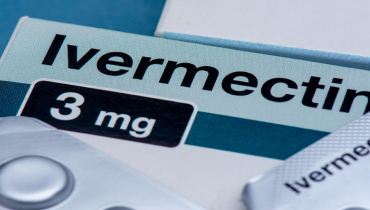
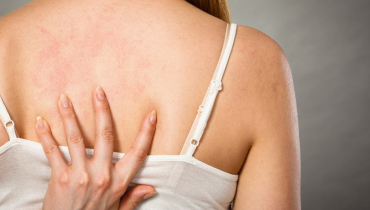
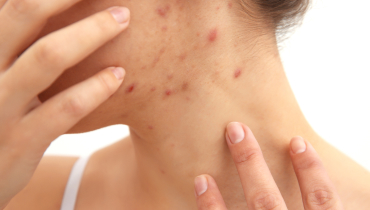







I received the package a few days ago. Thank you so very much! Everything was perfect. I do appreciate your great service and will most definitely order again from you. I'm glad to say that I can recommend you with total confidence. Thanks
Yeah! The package arrived very quickly. Thanks!
Everything is fine! Thanks!